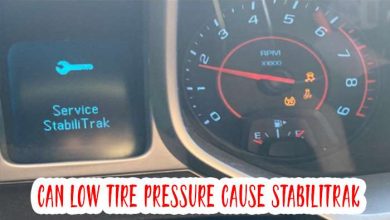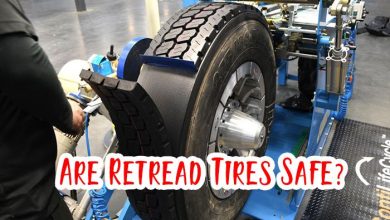45 vs 50 Tire Aspect Ratio: Choosing the Right Fit for Your Vehicle
As an automobile engineer passionate about tires, I understand the significance of choosing the right tire for your vehicle. Among the many aspects to consider, one of the most crucial is the tire aspect ratio.
This comprehensive guide will explore the key differences between 45 and 50 tire aspect ratios. Whether you’re a car enthusiast or a daily commuter, this article will help you make an informed decision that suits your driving needs.
Understanding Tire Aspect Ratio
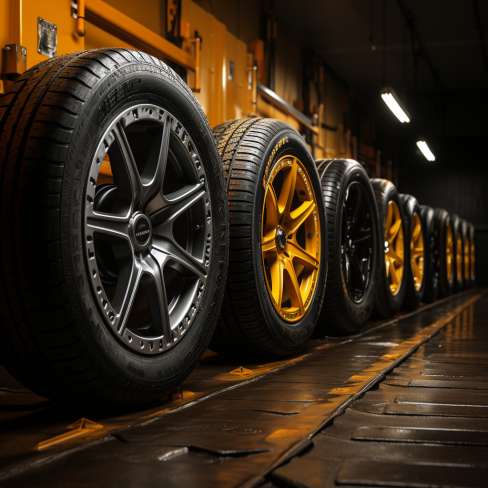
Tire Aspect Ratio is a critical aspect of a tire’s design, representing the relationship between the tire’s height and width. The aspect ratio is expressed as a percentage, comparing the tire’s sidewall height to its width.
Read Also: Are 20 Inch Tires Good In The Snow?
45 vs 50 Tire Aspect Ratio: Key Differences
| Aspect Ratio | 45 | 50 |
|---|---|---|
| Sidewall Height (as a % of tire width) | 45% | 50% |
| Pros | – Sportier Look – Improved Handling – Enhanced Steering Response | – Smoother Ride – Better Impact Absorption – Reduced Noise |
| Cons | – Ride Comfort – Impact on Potholes – Noise Levels | – Less Sporty Look – Handling – Fuel Efficiency |
| Traction and Grip | – Superior on Dry Roads – Better Acceleration and Braking | – Excellent in Wet Conditions – Reduced Hydroplaning Risk |
| Ride Comfort | Less Comfortable, Especially on Rough Roads | More Comfortable, Even on Uneven Surfaces |
| Handling and Stability | Excellent Handling, Sharp Cornering | Stable and Predictable Handling |
| Fuel Efficiency | Slightly Lower Fuel Efficiency | Slightly Better Fuel Efficiency |
| Durability and Longevity | Shorter Lifespan | Longer Lifespan |
| Aesthetics and Design | Sporty and Aggressive Look | Classic and Timeless Appearance |
| Price and Affordability | Often More Expensive | More Budget-Friendly |
| Vehicle Compatibility | Preferred for Performance and Sports Cars | Suitable for a Wide Range of Vehicles |
| Weather Conditions | Excellent Dry Performance | Excellent Wet and Rainy Performance |
| Load Capacity | Higher Load Capacity | Slightly Lower Load Capacity |
| Noise Levels | Can Be Noisier | Quieter Ride |
Explanation of 45 and 50 Aspect Ratios
Let’s start by understanding the basics. A 45 aspect ratio means that the tire’s sidewall height is 45% of the tire’s width, while a 50 aspect ratio means it’s 50%. This seemingly small numerical difference can significantly impact your driving experience.
Pros and Cons of 45 Aspect Ratio Tires
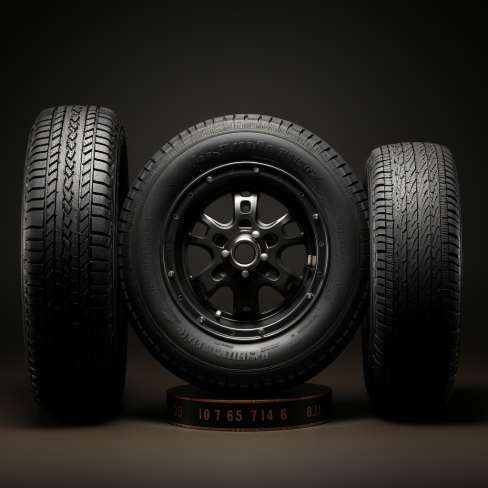
Pros:
- Sportier Look: 45 aspect ratio tires often have a lower profile, giving your vehicle a sportier and more aggressive appearance.
- Improved Handling: They tend to provide better cornering stability due to their shorter sidewalls.
- Enhanced Steering Response: You’ll feel more connected to the road, resulting in a more responsive steering feel.
Cons:
- Ride Comfort: The shorter sidewalls can make the ride less comfortable, especially on rough roads.
- Impact on Potholes: They are more susceptible to damage from potholes or road imperfections.
- Noise Levels: Due to less cushioning, they can be noisier, creating more road noise inside the cabin.
Pros and Cons of 50 Aspect Ratio Tires
Pros:
- Smoother Ride: 50 aspect ratio tires have taller sidewalls, offering a more comfortable ride, especially on uneven surfaces.
- Better Impact Absorption: They can absorb shocks and impacts better, protecting your wheels and suspension.
- Reduced Noise: The taller sidewalls act as additional noise dampeners, making for a quieter ride.
Also Read: How to Rotate Staggered Tires?
Cons:
- Less Sporty Look: They may not give your vehicle the same aggressive appearance as lower aspect ratios.
- Handling: They may not provide the same level of sharp handling and cornering performance.
- Fuel Efficiency: They might impact fuel efficiency marginally due to slightly higher rolling resistance.
Traction and Grip
1. Traction in 45 Aspect Ratio Tires
45 aspect ratio tires often offer superior traction on dry roads, thanks to their wider contact patch. This can result in better acceleration and braking performance, making them a great choice for sports cars and enthusiasts.
2. Traction in 50 Aspect Ratio Tires
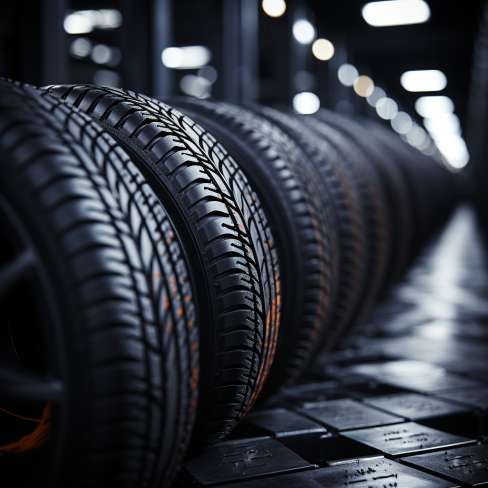
On the other hand, 50 aspect ratio tires provide excellent traction on wet surfaces. Their taller sidewalls allow for better grip in rainy conditions, reducing the risk of hydroplaning.
3. Grip on Different Surfaces
The choice between 45 and 50 aspect ratio tires also depends on the types of surfaces you’ll be driving on. If you live in a region with a mix of wet and dry conditions, 50 aspect ratio tires might be the safer choice.
Related Post:
CrossClimate 2 vs Winter Tires
All Season VS Mud And Snow Tires
Bald Tires vs New Tires
BFGoodrich vs Michelin Tires
Ride Comfort and Noise
1. Ride Comfort in 45 Aspect Ratio Tires
Ride comfort can be a deal-breaker for many drivers. 45 aspect ratio tires, with their shorter sidewalls, may not provide the smoothest ride on rough or uneven roads. If you prioritize comfort, you might want to consider other options.
2. Ride Comfort in 50 Aspect Ratio Tires
In contrast, 50 aspect ratio tires are designed with comfort in mind. Their taller sidewalls act as a buffer against road imperfections, delivering a smoother and more enjoyable ride.
3. Noise Levels in Various Aspect Ratios
45-aspect ratio tires generate more road noise due to their limited sidewall cushioning. If a quiet cabin is your priority, 50 aspect ratio tires might be a better choice.
Handling and Stability

1. Handling Characteristics of 45 Aspect Ratio Tires
If you enjoy spirited driving and demand sharp handling, 45 aspect ratio tires are the way to go. They offer improved cornering stability and steering response, making your car feel like an extension of yourself on the road.
2. Handling Characteristics of 50 Aspect Ratio Tires
50 aspect ratio tires prioritize stability over sportiness. They may not be as sharp in the corners, but they provide a stable and predictable ride, ideal for daily commuting and long trips.
3. Stability at High Speeds
When it comes to high-speed driving, 45 aspect ratio tires shine. Their lower profile ensures better stability at high velocities, making them popular among performance enthusiasts.
Fuel Efficiency
1. Fuel Efficiency of 45 Aspect Ratio Tires
45 aspect ratio tires, with their sportier nature, may have slightly lower fuel efficiency due to increased rolling resistance. However, the impact is often marginal and shouldn’t be a significant concern for most drivers.
2. Fuel Efficiency of 50 Aspect Ratio Tires
On the other hand, 50 aspect ratio tires, with their focus on comfort, tend to offer slightly better fuel efficiency. They might be the better choice if you’re looking to save on gas.
3. Impact on Gas Mileage
In the grand scheme of things, the difference in fuel efficiency between these two aspect ratios is relatively small. Your driving habits and maintenance practices have a more significant impact on gas mileage.
Durability and Longevity

1. Lifespan of 45 Aspect Ratio Tires
45 aspect ratio tires are often associated with shorter lifespans due to their sporty nature and the potential for quicker wear. However, this can vary based on the tire’s quality and your driving habits.
2. Lifespan of 50 Aspect Ratio Tires
50 aspect ratio tires generally offer longer lifespans, thanks to their ability to absorb road shocks and protect the tire from wear and tear.
3. Resistance to Wear and Tear
Both aspect ratios can be durable if properly maintained. Regular tire rotations, alignments, and maintenance can significantly extend the life of your tires, regardless of the aspect ratio.
Weather Conditions
Performance in Dry Conditions
45 aspect ratio tires excel in dry conditions, providing the grip and handling needed for spirited driving.
Performance in Wet and Rainy Conditions
50 aspect ratio tires shine in wet and rainy conditions, offering better traction and safety.
Snow and Winter Performance
For snowy and icy conditions, it’s advisable to consider dedicated winter tires, regardless of aspect ratio. All-season tires may not provide sufficient grip in extreme winter weather.
Load Capacity
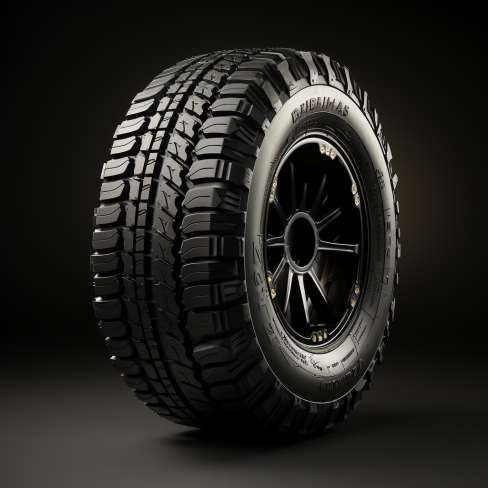
1. Load Capacity of 45 Aspect Ratio Tires
45 aspect ratio tires often have a higher load capacity, making them suitable for vehicles with heavy payloads.
2. Load Capacity of 50 Aspect Ratio Tires
50 aspect ratio tires may have a slightly lower load capacity but are still suitable for most passenger vehicles.
3. Hauling and Towing Considerations
If you plan on hauling heavy loads or towing, checking the tire’s load rating and ensuring it meets your specific requirements is essential.
Real-World Experiences
To help you make an informed choice, here are a few real-world experiences from drivers who have used both 45 and 50 aspect ratio tires:
John’s Story: “I upgraded to 45 aspect ratio tires on my sports car, and the difference in grip and cornering was immediately noticeable. My car is glued to the road, but I feel more bumps.”
Sarah’s Experience: “I drive a family SUV and switched to 50 aspect ratio tires for a quieter and smoother ride. It’s a night-and-day difference, especially on long road trips.”
Making the Right Choice
Ultimately, the decision between 45 and 50 aspect ratio tires depends on your driving style, priorities, and the type of vehicle you own. If unsure, consult your vehicle manufacturer’s recommendations and consider the conditions you typically drive in.
It’s worth noting that some vehicles may not allow for both options, so check your vehicle’s specifications.
FAQs
How does the aspect ratio affect my driving experience?
The aspect ratio significantly influences your driving experience. A lower aspect ratio (e.g., 45) enhances handling and sporty looks but may compromise comfort. A higher aspect ratio (e.g., 50) prioritizes comfort but may sacrifice some handling performance.
Which is better for performance: 45 or 50 aspect ratio tires?
For performance-oriented driving, 45 aspect ratio tires are generally preferred. They offer better handling and grip on dry roads.
Are 45 aspect ratio tires more fuel-efficient than 50 aspect ratio tires?
Not necessarily. While 50 aspect ratio tires may offer slightly better fuel efficiency due to their design, the difference is often minimal and influenced by various factors.
Is 50 aspect ratio good?
A 50 aspect ratio is good for drivers prioritizing ride comfort and safety in wet conditions. It’s a versatile option suitable for a wide range of vehicles.
Is a higher tire aspect ratio better?
A higher tire aspect ratio, like 50, is better for drivers prioritizing comfort, noise reduction, and safety. It offers a smoother ride and better grip in wet conditions.
Conclusion
In the world of tires, choosing the right aspect ratio is a decision that directly impacts your driving experience.
Whether you opt for the sporty appeal and sharp handling of 45 aspect ratio tires or the smooth ride and safety of 50 aspect ratio tires, your choice should align with your vehicle type, driving habits, and personal preferences.
Considering the pros and cons outlined in this guide, you’ll be well-equipped to make an informed decision, ensuring your vehicle’s optimal performance and safety.


